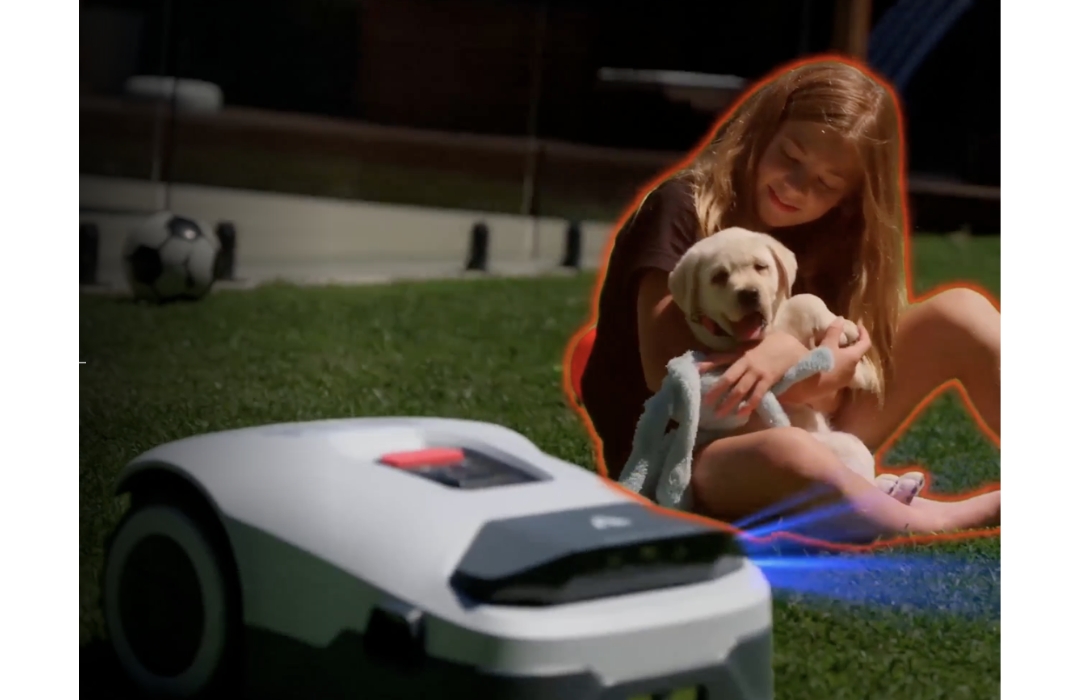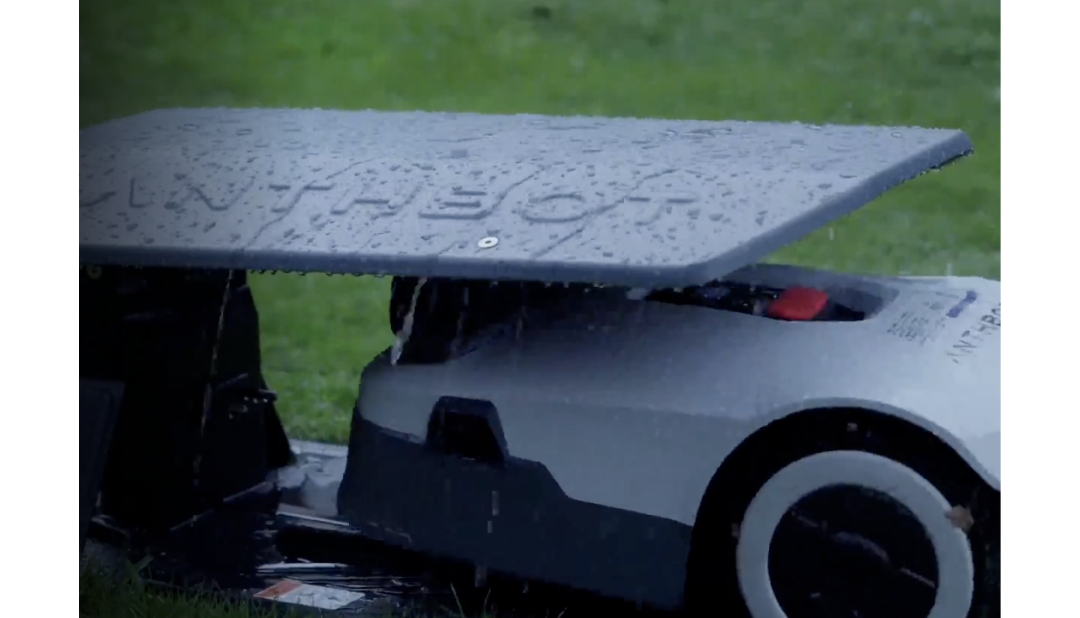Maintaining a beautiful lawn while ensuring the safety of pets can be a complex task. Integrating robotic mowers, such as the ANTHBOT mower, into lawn care routines offers a solution that combines technology with convenience. Understanding how the ANTHBOT mower operates can help homeowners achieve a lush lawn without compromising the safety of their furry friends.

Smart Obstacle Avoidance: Essential for Modern Robotic Lawn Care
Smart obstacle avoidance is a critical feature in robotic mowers, addressing common concerns in lawn maintenance. Advanced cameras detect obstacles such as furniture or pets, allowing the mower to navigate safely without causing damage or posing risks to its surroundings.
Key Features of Smart Obstacle Avoidance
- Real-time Detection: Cameras respond instantly to objects in the mower’s path.
- Adaptive Navigation: The mower adjusts its route to avoid disturbing pets or hitting obstacles.
- Safe Operation: The mower operates quietly and effectively while managing its environment.
Benefits for Lawn and Pets
- Pet-Friendly: Pets can roam without worry as the mower circumvents them.
- Consistent Lawn Care: Avoiding obstacles allows for uninterrupted mowing sessions.
- Feedback Mechanism: Users receive notifications if the mower encounters obstacles, prompting appropriate action.
Core Components of Smart Obstacle Avoidance
Robotic mowers include smart technologies that help maintain lawns while keeping pets safe. Key components enhance their ability to avoid obstacles.
4-Camera Technologies
These mowers employ multiple cameras to gather real-time data, providing comprehensive environmental awareness. Enhanced obstacle detection is achieved through visual input, allowing the mower to recognize furniture, pets, and other objects for safe navigation.
RTK Positioning
RTK positioning offers remarkable precision. This satellite-based system provides centimeter-level accuracy, allowing the mower to avoid obstacles and minimize the chances of accidental collisions easily.
Mapping and Navigation Strategies
Robotic mowers incorporate sophisticated mapping and navigation strategies, facilitating efficient lawn care while protecting pets.
Automatic and Remote Mapping
Users can create maps of their lawns using remote access. This allows the mower to follow optimized paths and maintain coverage without missing spots. Settings can also be adjusted to accommodate obstacles effectively.
Multi-zone and No-go Zone Management
Defining specific zones is straightforward. Users can control areas that need mowing and those that should be avoided, ensuring pet safety during operation.
Mowing Patterns
Robotic mowers offer various mowing patterns, allowing users to select styles based on their lawn’s layout. This flexibility promotes even grass growth and enhances coverage while protecting pets.
Safety Mechanisms for Lawns and Pets
Robotic mowers incorporate features that prioritize the safety of both lawns and pets, reducing the risk of injury while maintaining efficient lawn care.
Real-time Obstacle Detection
Advanced 4-camera system identifies obstacles like pets or garden furniture. Upon detection, the mower stops, reverses, or changes direction to avoid contact, protecting pets and preventing damage to the mower.
Environmental Adaptation
These mowers adapt to their surroundings based on programmed settings. For instance, lawn care intervals can be adjusted to avoid disturbing wildlife during specific times, highlighting a commitment to a balanced approach in lawn care.
Technical Specifications
Robotic mowers incorporate several key features that protect lawns and pets, focusing on cutting efficiency, terrain adaptability, and built-in durability.
Blade and Cutting Mechanism
Sharp blades operate at high speeds for efficient grass cutting. Regular replacement of these blades is vital for maintaining performance. Using recessed blades lowers the risk of pet injuries, a notable safety feature.
Terrain Handling
Robotic mowers adapt well to various terrains, including slopes and uneven surfaces. This capability ensures consistent cutting and prevents missed spots, handling inclines up to a 45% slope without issues.
Waterproofing and Durability
Due to their waterproof design, these mowers resist moisture, allowing operation in wet conditions without compromising performance or safety. The materials contribute to longevity, providing durability against typical outdoor wear and tear.

Maintenance and Software Updates
Regular maintenance and software updates are vital for robotic mowers’ optimal performance. These practices help maintain functionality and prolong the device’s life.
Sensor and Hardware Maintenance
Routine checks of sensors for dirt or obstructions are essential to ensure proper function. Cleaning the cameras, maintaining the sensors as necessary, and inspecting hardware components regularly can prevent malfunctions. Keeping the blades sharp promotes effective cutting.
Software Update Procedures
Users should periodically check the manufacturer’s website or app for updates. Downloading available updates according to provided instructions and restarting the mower afterward keeps the system current and improves overall performance.
Installation and Setup
Setting up a robotic mower involves installing a boundary wire around the lawn. This wire outlines the mowing perimeter, keeping the mower within specified areas and away from unwanted spaces.
Plug-and-Play Operation
Robotic mowers feature automatic navigation using cameras. These cameras detect pets and obstacles, allowing for safe operation without manual input.
Charging and Power Management
Efficient power management allows the mower to return to its charging station when not in use, extending battery life and maximizing operational efficiency.
| Feature | Description |
|---|---|
| Charging Station | Automatically docks when needed |
| Battery Life | Optimized for extended use |
| Power Consumption | Energy-efficient design |
Such features contribute to a more streamlined lawn care routine.
Operational Performance
Robotic mowers deliver remarkable service through advanced technology, significantly contributing to lawn care and pet safety.
Noise Levels
Operating at 58 dB, robotic mowers generate less noise than traditional mowers, which can reach up to 100 dB. This quieter operation minimizes stress for pets, creating a more comfortable environment for them and those nearby.
Continuous Mowing Algorithm
Robotic mowers efficiently cover the lawn using a sophisticated continuous mowing algorithm. The algorithm adapts by tracking previous mowing paths, promoting optimal coverage, and reducing the need for manual intervention.
Conclusion
Robotic mowers incorporate various features that prioritize pet safety and lawn care. Collision detection systems avoid pets and objects, reducing risks during operation. Automatic shutoff mechanisms stop blades when lifted or tilted, protecting pets from injury. Wildlife consideration modes can halt operation during peak animal activity hours, while boundary control prevents mowing outside designated zones. Advanced sensors help navigate uneven terrains without damaging grass.
Such thoughtful features deliver peace of mind while maintaining a healthy lawn. Regular software updates and proper setup enable optimal performance, making robotic mowers valuable to any lawn care routine.




























